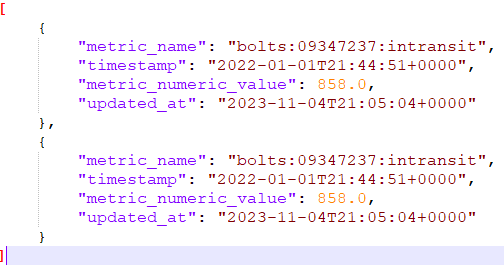In the world of data integration, flat files are a common and important type of data source. Flat files are simple, text-based files that store data in a tabular format, making them easy to read and manipulate. One of the most popular types of flat files is the CSV (Comma Separated Values) file. In this article, we will explore the different types of flat files, with a focus on CSV files, and how they are used in data integration.
What are Flat Files?
Flat files are a type of data storage format that stores data in a tabular structure, with rows and columns. They are called “flat” because they do not have any complex data structures or relationships between data elements. This makes them easy to read and manipulate, making them a popular choice for data storage and transfer.
Flat files are typically stored in a plain text format, meaning they can be opened and read by any text editor. This makes them highly portable and compatible with a wide range of systems and applications. They are also lightweight, making them easy to transfer and share.
Is a CSV a flat file?
There are several types of flat files, each with its own unique characteristics and uses. Some of the most common types of flat files include:
- CSV (Comma Separated Values)
- TSV (Tab Separated Values)
- Fixed-width files
- Delimited files
- XML (Extensible Markup Language) files
Each of these file types has its own advantages and disadvantages, and the choice of which one to use will depend on the specific needs of the project.
CSV (Comma Separated Values) Files
CSV files are one of the most popular types of flat files, and they are widely used in data integration. They are simple, text-based files that store data in a tabular format, with each row representing a record and each column representing a field. The data in a CSV file is separated by commas, hence the name “Comma Separated Values.”
CSV files are easy to create and edit, and they can be opened and read by any text editor or spreadsheet program. This makes them a popular choice for storing and transferring data between different systems and applications.
TSV (Tab Separated Values) Files
TSV files are similar to CSV files, but instead of using commas to separate data, they use tabs. This makes them a popular choice for data that contains commas, such as addresses or product descriptions. TSV files are also easy to read and edit, and they can be opened by any text editor or spreadsheet program.
Fixed-Width Files
Fixed-width files are a type of flat file where each field has a fixed width, meaning that the data is aligned in columns. This makes them easy to read and manipulate, but they can be more challenging to create and edit compared to CSV or TSV files.
Delimited Files
Delimited files are similar to CSV and TSV files, but instead of using commas or tabs to separate data, they use other characters such as pipes (|) or semicolons (;). This makes them a popular choice for data that contains commas or tabs, as these characters will not interfere with the data.
XML (Extensible Markup Language) Files
XML files are a type of flat file that uses tags to define the structure and content of the data. This makes them more complex than other types of flat files, but they are also more flexible and can store more types of data. XML files are commonly used for data exchange and web services.
How are Flat Files Used in Data Integration?
Data integration is the process of combining data from different sources into a single, unified view. Flat files are an essential part of this process, as they are often used as a source of data for data integration projects.
Data Extraction
by Traxer (https://unsplash.com/@traxer)
One of the primary uses of flat files in data integration is as a source of data for extraction. Flat files are easy to create and edit, making them a popular choice for storing data that needs to be extracted and integrated into a data warehouse or other data storage system.
Data Transformation
Flat files are also commonly used in data transformation, where data is converted from one format to another. For example, a CSV file may be transformed into a database table or a JSON file. Flat files are easy to manipulate, making them an ideal choice for data transformation tasks.
Data Loading
Once data has been extracted and transformed, it needs to be loaded into the target system. Flat files are often used for this purpose, as they are easy to read and can be loaded into a wide range of systems and applications.
Advantages of Using Flat Files in Data Integration
There are several advantages to using flat files in data integration, including:
- Portability: Flat files are easy to transfer and share, making them highly portable and compatible with a wide range of systems and applications.
- Lightweight: Flat files are lightweight, meaning they do not take up a lot of storage space and can be transferred quickly.
- Easy to manipulate: Flat files are easy to create, edit, and manipulate, making them an ideal choice for data integration tasks.
- Compatible with a wide range of systems: Flat files can be opened and read by any text editor or spreadsheet program, making them compatible with a wide range of systems and applications.
Conclusion
Flat files, including CSV files, are an essential part of data integration. They are simple, text-based files that store data in a tabular format, making them easy to read and manipulate. Flat files are used for data extraction, transformation, and loading, and they offer several advantages, including portability, lightweight, and compatibility with a wide range of systems and applications. By understanding the different types of flat files and how they are used in data integration, you can make informed decisions about which file type is best for your project.








